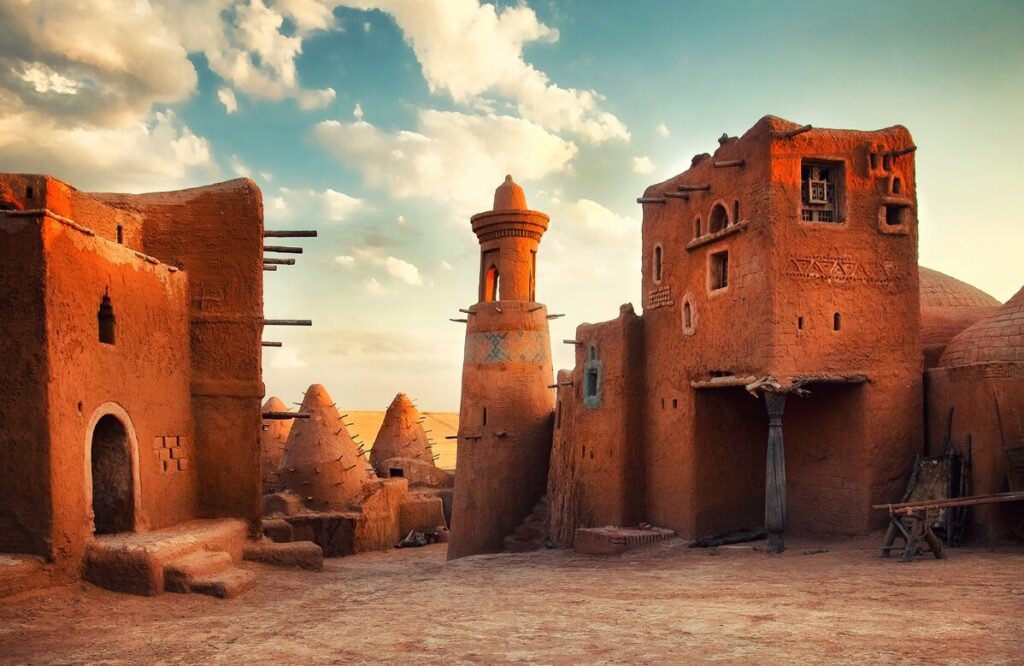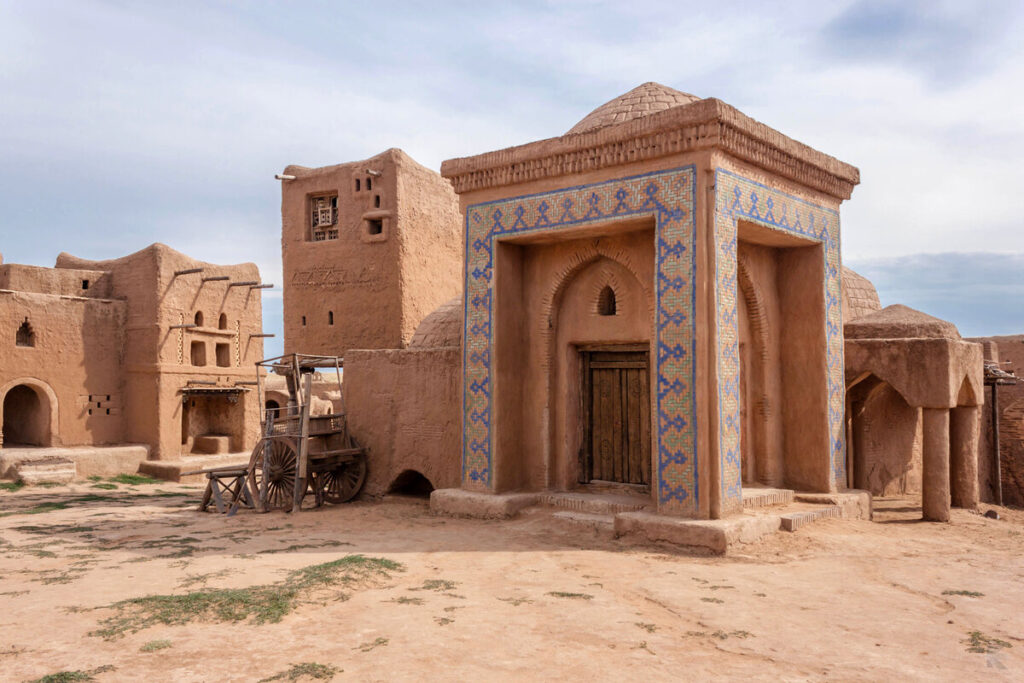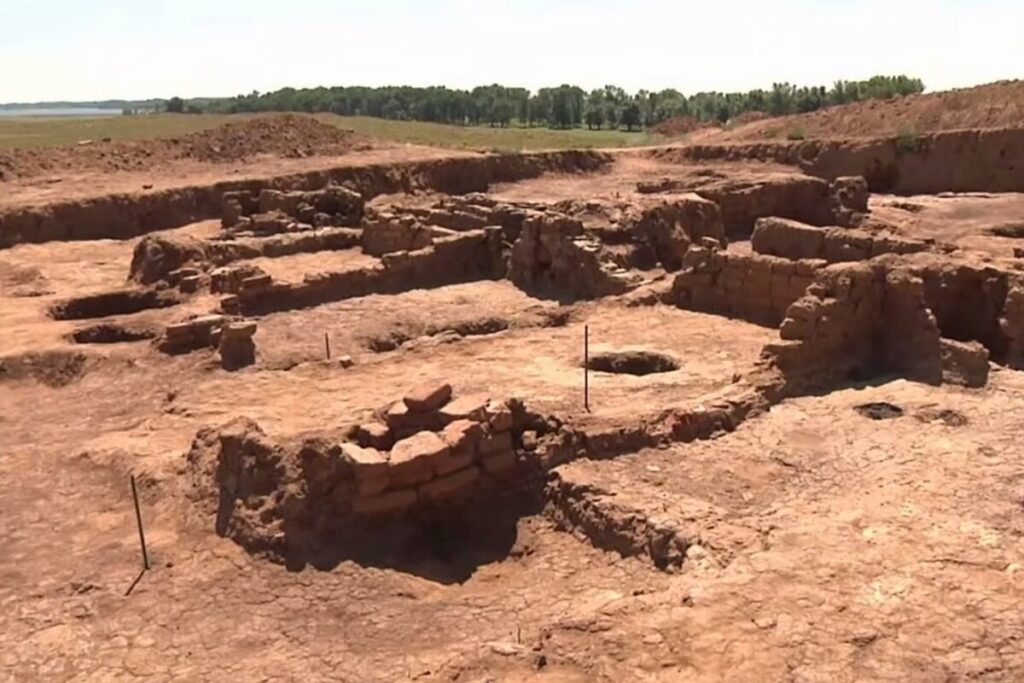As we know, the Golden Horde had no less than 150 cities, which were different in size and importance. Where Cumans steppe winds blew recently, bending to the ground waddle, and raising sand whirlwinds, many cities with oriental beautiful names began to appear: Gulstan (Land of Flowers), Sarai (Palace), Saraychik (Small Palace), Ak-Sarai (White Palace), Ak-Kirmen (White Fortress), Ak-Mosque (White Mosque), Ulug-Mosque (Great Mosque), Argamakly-Sarai (Palace of the swift-footed horses). All of them looked approximately the same, and the way of life in them was also approximately the same.

To our days, no city has not survived in the form in which they were more than half a millennium ago.
Scientists have collected bits and pieces of ideas about what these cities were, how they lived in them, and what people were doing. Information about the Golden Horde cities was collected by scientists as a result of many years of archaeological research, as well as by studying numismatic material, i.e. coins minted in a number of cities. Found a description of the way of life in written sources, such as: works of Arab-Persian historical geography, Russian chronicles, notes of Western European travelers, Tatar historical sources, as well as works of folk epic.

In the study of the history of the Golden Horde cities of great importance played data from medieval maps, compiled mainly by Italian travelers of the XIV — mid XV centuries.
A lot of data about ruins of cities, palaces, mausoleums can be learned from travel notes of later travels of famous people of XVIII — XIX centuries.
And though a little, but in their medieval grandeur have been preserved ground architectural monuments in a number of areas of the Golden Horde — in the Crimea, Bulgar, Bashkortostan.
Among hundreds of big and small cities of the Golden Horde Khanate two big cities stand out: the first of them — Sarai-Batu (according to numismatics, Sarai al-Mahrus, i.e. Sarai God-safe in translation from Arabic; also known as Old Sarai, or simply Sarai) — is the first capital of the Golden Horde, built under Batu Khan in the early 50s of the XIII century. Under Uzbek-khan the capital was transferred to another city — Sarai-Berke, built, as noted in the sources, under Berke-khan. The name of this city according to numismatic data is Saray al-Jedid, i.e. New Saray.
Sarai — Batu was truly a city — a giant, the area of 36 square kilometers. Its width was 3.6 kilometers and its length was 10 kilometers. It was a city consisting mostly of one-story houses. At the same time, it had quite large buildings: palaces, mosques, mausoleums, caravanserais, public baths, etc. Bazaars, as it usually happens in the East, occupied large areas. Here we should also add various suburban areas with the estates of the aristocracy. All this together amounted to a huge territory, and a city similar to Sarai in size was not only in the East, but also in the whole of Europe.

The city was reconstructed for the filming of a feature film. This is the scenery.
Now from these cities actually nothing is left. After the disappearance of the Golden Horde Khanate, almost immediately these cities were wiped off the face of the earth. The remains of Sarai-Batu are located on the left bank of the Akhtuba, a large delta of the Volga on the left, near the village of Selitrennoye in the Astrakhan region, about 120 kilometers north of Astrakhan. On its territory palaces, mosques and many other things were demolished in 1587 by order of Tsar Fedor, son of Ivan the Terrible, and from these bricks the Astrakhan Kremlin with its powerful fortress structures — wide walls, high towers, and internal buildings was built.

This is how Sarai — Batu looks like nowadays.
Geologists during excavations found out that the people lived in the city was well-equipped: there were heating, water supply, sewage and drainage systems. Palaces and other public buildings were built of burnt bricks on lime mortar, houses of ordinary people — of raw, i.e. adobe bricks, as well as of wood. Excavations revealed the remains of two large palaces with richly decorated ceremonial halls and living rooms. One of the palaces had a swimming pool with running water in the center, behind which there was made an elevation for a throne under a canopy — an ornate ceremonial canopy. Undoubtedly, it was a khan’s palace.
Sarai-Berke, the second capital of the Golden Horde, was located up the Akhtuba, also on the left bank. Now near it is the village of Tsarev, Volgograd region.

This is how it looks what is left of the city of Sarai — Berke.
Al-Omari writes that «the city of Sarai was built by Berke Khan on the bank of the Turan river (Itil). It lies on the salt marsh land, without any walls. The place of stay of the king there is a large palace, on top of which is a golden new moon. The palace is surrounded by walls, towers and houses in which his emirs live. In this palace are their winter quarters. This river (Itil). is the size of the Nile taken three times and even more; on it large ships sail and go to Russians and Slavs. The beginning of this river is also in the land of the Slavs. He, i.e. Sarai, is a great city, consisting in itself of markets, baths and establishments of piety, a place where goods are directed…».
The words of this author refer to the period of Uzbek Khan’s reign.
Sarai-Berke was destroyed in 1395 as a result of the last campaign to the Golden Horde by Tamerlane, the ruler of the Timurid state in Central Asia. At present there are no ground architectural monuments on its territory, as well as on Sarai-Batu.
Sarai-Batu and Sarai-Berke were centers of trade, craft and culture between East and West in the direct sense of the word. Also coins were minted here.
Whether or not there was a Tatar-Mongol yoke — I can’t answer, but the Golden Horde existed and prospered in its time right between the present cities: Volgograd and Astrakhan. And if you visit these places, you can see fragments of bricks, pottery and blue facing tiles, which decorated palaces and rich houses. It is forbidden to pick up ancient artifacts. These territories are cultural and historical monuments and are protected by the state.
Not very long ago, near the excavations of the city of Sarai — Batu filmed the feature film «The Horde». Not far from the river Akhtuba were set sets for the movie, which after filming became available for tourists to visit.

But time will not give long to stand these decorations, which recreate at least approximately the look of the Golden Horde capital city. And all again will become history…
